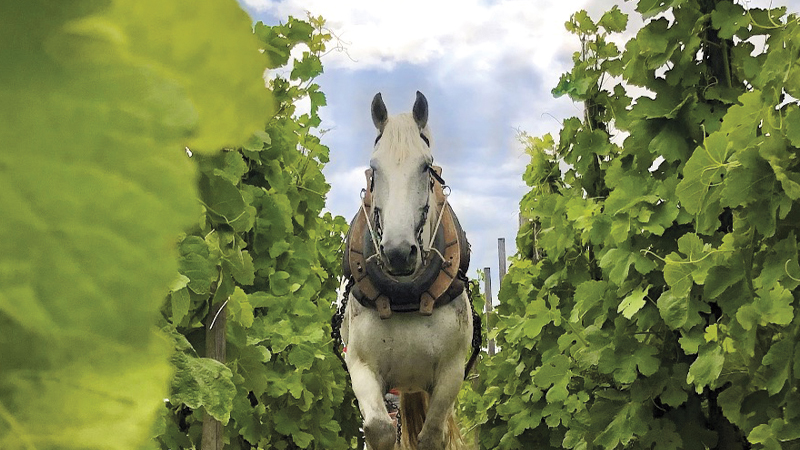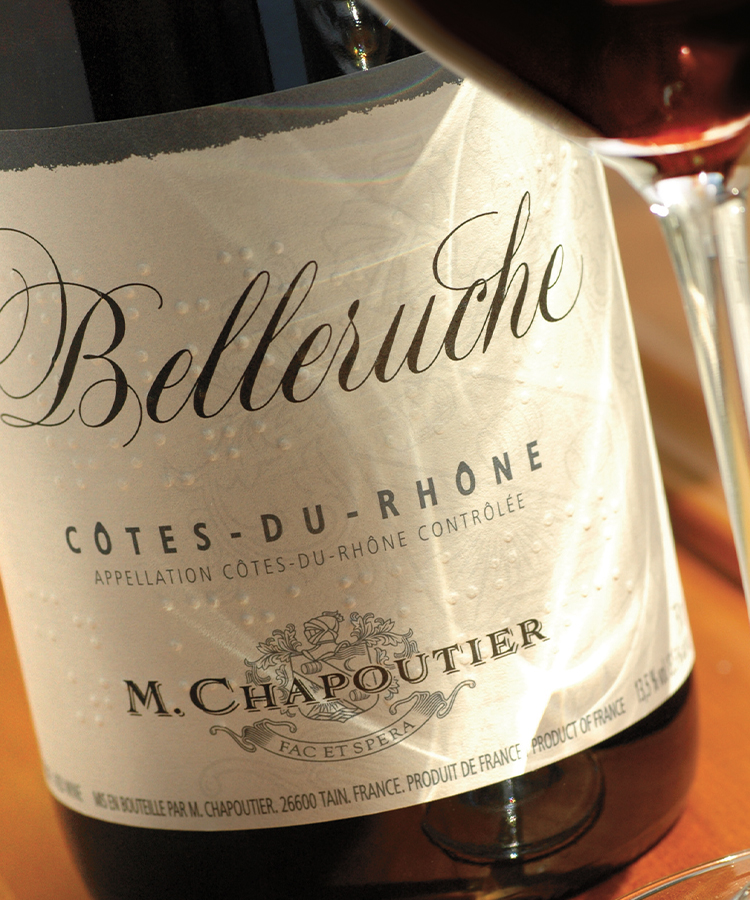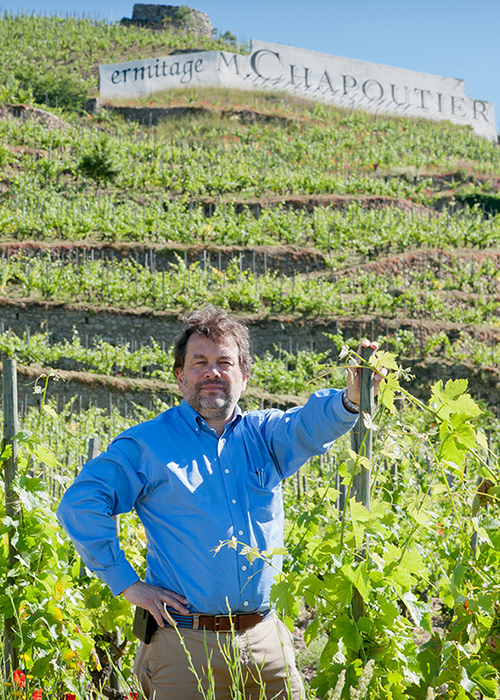
Wine brands everywhere purport to make wines that tell the story of their soils, but few execute like famed Rhône producer Michel Chapoutier. For Michel and his team, the art of the vintner is their attempt to get the best possible snapshot of the terroir in a wine.
Michel Chapoutier is an icon in the wine industry. His family can trace their roots in the Rhône Valley to the early 1800s, but it wasn’t until the second half of the 20th century when their wines took off. After his father, Max Chapoutier, laid the groundwork for their family business as a winery and negociant — which produces grapes to sell to other winemakers — Michel took it all to the next level by incorporating biodynamic techniques to create more terroir-driven wines and, simultaneously, a more sustainable company.
Now, you’ll find those wines on holiday tables everywhere, including ours.
M. CHAPOUTIER’s wines come from the Rhône Valley, a region in southeastern France known for its red wines. The area produces whites and rosé too, but it’s the reds that really shine. These wines are based on the Grenache, Syrah, and Mourvedre grapes, with up to 11 other red grapes allowed as blending components. M. CHAPOUTIER is well known for his White Hermitage wines as well.
Depending on the sub-region of the valley, Syrah or Grenache will take the lead as the dominant grape. In the north, appellations like Hermitage, Côte-Rôtie, and Crozes-Hermitage feature primarily Syrah. In the South, designations such as Côtes-du-Rhône and Châteauneuf-du-Pape showcase the best of Grenache.
For M. CHAPOUTIER, the first success came with its Northern Rhone wines from Hermitage, the appellation where the winery is actually physically based. When Michel took the reign, he shifted the focus to the origin of the wine: the soils, climate, topography, and atmosphere of the Rhône Valley. It’s the French concept of terroir — that the natural environment imparts characteristic aromas and flavors into the wine in a way that only that specific place can do.
The guiding principle is an important one: biodynamics. Biodynamics is a holistic, ecological approach to agriculture that integrates science similar to organic methodology with the spiritual energy of nature. The guidelines include things like prohibiting the use of chemical fertilizers and herbicides in favor of organic matter and lower yields to produce more concentrated, natural fruit.
Michel is often referred to as the pioneer in biodynamic practices in the Rhône Valley, since picking up the teachings in the 1990s. He famously said of adapting his schedule to lunar and solar cycles: “The great cycles that all men of the land must respect are those of our celestial environment: those of the moon, of the sun, of slumber and of awakening. We endeavor to respect this in our daily work, from the dormant period to harvest.” For him, a healthy landscape and a healthy business were not at odds. Instead, they should find a balance where everything energetically flows together.
Needless to say, his approach and his wines were a hit. To this day, the Hermitage wines command high scores and even higher prices, the type of wine that connoisseurs seek out vintage after vintage. But that popularity allowed them to expand to many other parts of the Rhône Valley, including heading south to focus on food-friendly, Grenache-based red wines.
In fact, M. CHAPOUTIER best captures the terroir of the Southern Rhône in the Belleruche Côtes-du-Rhône, a blend of Grenache and Syrah. The Belleruche Range combines the two heralded red grapes of the whole Rhône Valley into a silky, fruit-forward wine that truly flexes on the dining table.
The terroir that produces these two grape varieties is full of several major types of soils, including pebbly clay, stony clay terraces, and silty sand that all provide the vine with constant water supply and diurnal temperature control. This results in clear expressions of each grape from the start. The team further encourages that persona by vinifying and aging the wine in inert vessels of concrete and stainless steel.
The result is a garnet-hued wine with intense aromas of raspberry and white pepper followed by powerful flavors of black currant and spice with delicate tannins. It maintains the purity of the grape flavors of the Rhône: the iconic notes of currant and red fruits followed by touches of roasted meats, dried herbs, leather, and spices. Côtes-du-Rhône are made to drink now, with aging just three to five years. That means the current 2020 vintage that you find on store shelves today is ready to pop open.
The Belleruche Range is an M. CHAPOUTIER wine for us mere mortals to enjoy. It sits at a comfortable price point that means you can have it tag along to every dinner party. It pairs with everything from an appetizer cheese board with Comté and Camembert to roasted meats like grilled rack of lamb and sous vide duck — the types of decadent dishes that fill the holiday table. If you spend the winter in a sunny destination, try it with barbecue (though we’d brave the cold to grill out for it.)
It’s really a can’t-go-wrong red wine. If Aunt Kathy pours it alongside her slice of the yule log cake, well, it will be just right. After all, wine is about the experience beyond the culinary accolades.
I first learned of famed producer Michel Chapoutier’s wines some years ago when I discovered they add braille to all their labels. That idea of inclusivity stayed with me, but it’s not unique to the bottle design. It permeates throughout the entire brand, right down to its core value of generosity. These wines are meant to be shared with friends, family, colleagues, and acquaintances. Not only do they taste the way Côtes-du-Rhône red wine should, all black currant and spices with a silky finish; they exude the principles of a brand you want to support. And what better time to start than the holidays.

This article is sponsored by Folio Fine Wine Partners.

